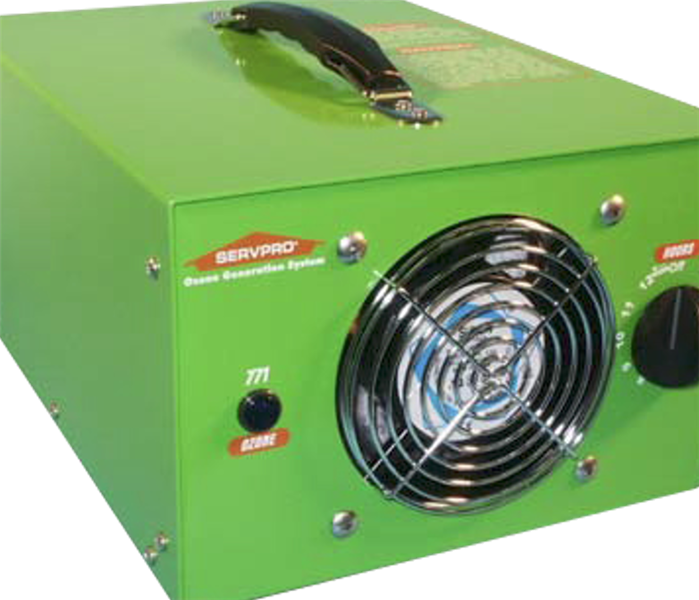Deodorization Safety Procedures
12/6/2017 (Permalink)
Safety during Deodorization Procedures
The cleaning and restoration industry is always concerned about safety and health hazards. OSHA—the Occupational Safety and Health Administration—regulates safety in the workplace. Our technicians are OSHA 10 certified. That means that they are trained in the recognition, avoidance, abatement and prevention of safety and health hazards on the job site. There are two methods of deodorization, thermal fogging and ozone, which bring with them significant safety issues. Both methods work by putting substances into the air that could be irritating to humans if breathed. Fortunately, when proper precautions have been taken, deodorizing with either method can be performed safely and effectively.
Safety with Thermal Fogging
Thermal fogging usually dispenses solvent-based deodorants. Heating and combusting the deodorizing product breaks it down into extremely small particles. Safety precautions are needed to prevent an incident. One potential hazard is the flammable nature of deodorizing products used for thermal fogging. Another risk may be physical reactions of people exposed to the fog.
Our technicians post "Thermal Fogging In Progress" signs or warning notices in easy-to-see areas at all points of entry. The sign may state a time limit for people to wait before re-entering the building or treated area. Our technicians will notify the local fire department and the security monitoring company (if the building has a security system) of the thermal fogging operation. The notification will avoid false alarm calls, because the thermal fog looks like smoke, and uninformed third parties may report the smoke to authorities.
Setup Procedures for Safety
SERVPRO technicians complete several setup tasks before starting the thermal fogging procedure. Setup involves extinguishing pilot lights on appliances such as wood stoves, gas logs, fireplaces, gas ranges, water heaters, and furnaces. The fogging agent can reach a flammable point when exposed to an open flame. We will also disconnect any electrical device that could cause a spark. All people and pets must be vacated from the area to be fogged. Our technicians wear personal protective equipment, including a respirator with organic vapor cartridges, goggles, and chemical resistant gloves. Upon completion the treated area will be thoroughly ventilated to remove odors and fumes before people and pets will be allowed back into occupants the treated area. This can be done by opening doors and windows and setting up exhaust fans and/or high velocity air movers to turn over the air in the treated area. Occupants should not re-enter the building until they are given clearance by our project manager.
Safety Precautions for Ozone
Ozone is a toxic gas and therefore it can be hazardous, but when used properly and following all safety precautions this method of deodorization is as safe as other available methods. Ozone will only be applied in unoccupied areas. All people and pets must be vacated from the areas to be ozoned. Ozone Warning signs will be posted at all entries prior to performing ozone deodorizing procedures. Technicians working around ozone wear personal protective equipment including goggles, chemical resistant gloves, and a NIOSH-approved respirator with an organic vapor cartridge. The treated area must be properly ventilated after ozoning is completed. Unlike thermal fogging Ozone dissipates completely within minutes and leaves no residue. Ventilate the treated area for at least 30 minutes after ozoning completion to address any lingering ozone. It is safe to re-enter treated areas 1 (one) hour after the ozone generation has stopped.





 24/7 Emergency Service
24/7 Emergency Service
